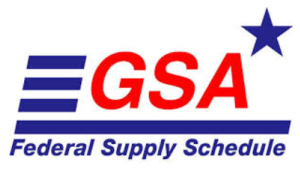In an era where cybersecurity threats are increasingly sophisticated, the Department of Defense (DoD) has continuously refined the Cybersecurity Maturity Model Certification (CMMC) to ensure robust protection of sensitive information within the Defense Industrial Base (DIB). The CMMC framework, a crucial component in safeguarding federal contracts, has recently undergone significant updates that all contractors need to be aware of. This post provides an in-depth look at the latest changes and compliance requirements for CMMC, helping you stay ahead in the compliance game.
What is CMMC?
The CMMC framework is designed to enhance cybersecurity practices across the DIB by standardizing and verifying the implementation of cybersecurity controls. The model spans multiple levels, each with specific cybersecurity practices and processes aimed at protecting Federal Contract Information (FCI) and Controlled Unclassified Information (CUI).
Recent Updates to CMMC
Transition from CMMC 1.0 to CMMC 2.0
The most significant recent update is the transition from CMMC 1.0 to CMMC 2.0. This transition aims to streamline and simplify the certification process while maintaining stringent security standards. Key changes include:
- Reduction of Maturity Levels: CMMC 2.0 has condensed the five maturity levels from CMMC 1.0 into three:
- Level 1: Foundational (Basic Cyber Hygiene)
- Level 2: Advanced (Aligned with NIST SP 800-171)
- Level 3: Expert (Aligned with a subset of NIST SP 800-172)
- Self-Assessment for Level 1 and Some Level 2 Programs: Level 1 and certain Level 2 programs now permit self-assessments, reducing the administrative burden on small and medium-sized businesses. Third-party assessments are still required for Level 2 programs that involve critical national security information and all Level 3 programs.
- Alignment with NIST Standards: CMMC 2.0 aligns more closely with NIST SP 800-171 and SP 800-172 standards, providing a more straightforward compliance path by leveraging existing federal guidelines.
- Elimination of Unique CMMC Practices and Processes: By removing unique CMMC requirements and focusing on existing NIST standards, the DoD has made compliance less complex and more transparent.
New Assessment Requirements
- Annual Self-Assessments: For organizations at Level 1 and non-critical Level 2, annual self-assessments with an accompanying affirmation from a senior company official are now mandatory.
- Triennial Third-Party Assessments: Critical Level 2 and all Level 3 organizations must undergo third-party assessments every three years to maintain their certification.
Enhanced Flexibility and Reduced Costs
The DoD has also introduced measures to make the certification process more flexible and cost-effective. These include the ability to obtain Plans of Action and Milestones (POA&Ms) to address compliance gaps, provided that all critical controls are met.
Compliance Requirements
To comply with the updated CMMC framework, organizations must:
- Understand the Level Requirements: Familiarize yourself with the specific practices and processes required at each maturity level. CMMC 2.0’s alignment with NIST standards makes this process more intuitive.
- Conduct Regular Assessments: Whether self-assessing or preparing for a third-party assessment, regular evaluations of your cybersecurity posture are essential. Ensure that you document all findings and address any gaps promptly.
- Implement Robust Cybersecurity Practices: Ensure that your cybersecurity practices align with the required standards, focusing on key areas such as access control, incident response, and risk management.
- Stay Informed and Adapt: The cybersecurity landscape and regulatory requirements are constantly evolving. Stay informed about the latest updates to CMMC and other relevant guidelines to ensure ongoing compliance.
Conclusion
The updates to the CMMC framework represent a significant step towards enhancing the security of the Defense Industrial Base while making the compliance process more streamlined and accessible. By understanding and adhering to these changes, federal contractors can ensure that they meet the necessary cybersecurity standards to protect sensitive information and secure federal contracts.
For more detailed guidance and the latest updates on CMMC, visit Official CMMC.
Looking for more tailored insights in Federal Contracting? Book your FREE 30-minute consultation call with us today! Limited Time Only, Hurry! Or visit our website for more information.
#CMMC #Cybersecurity #FederalContracts #CMMCCompliance #DefenseContracting #DoDCompliance #NIST #CyberSecurityMaturityModel #CMMCUpdates #CyberHygiene



